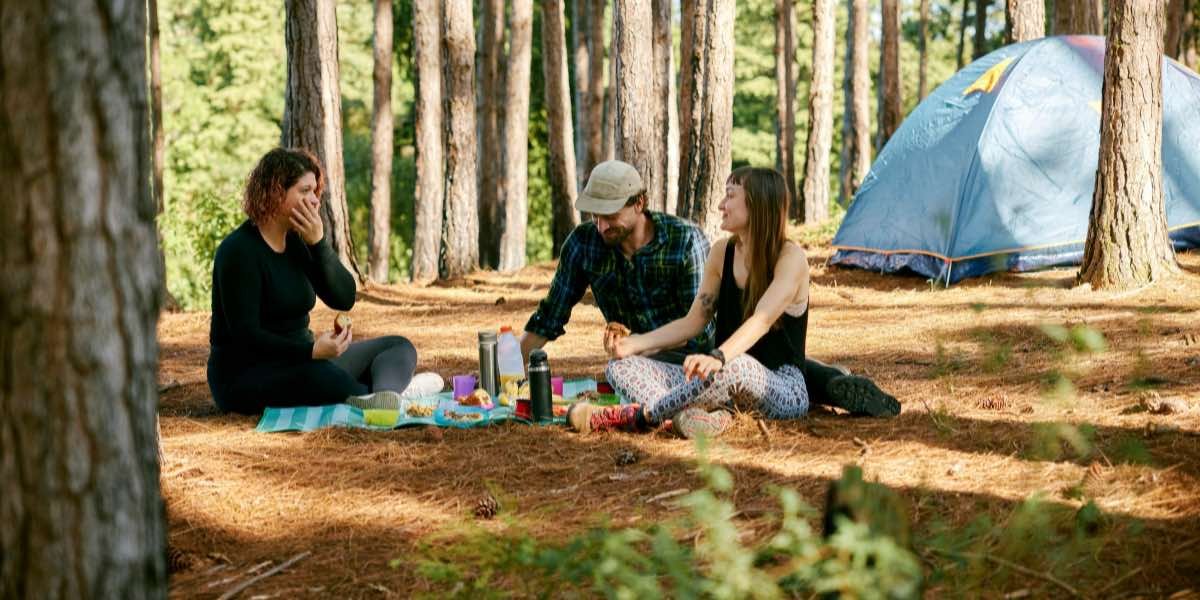How to Camp Responsibly in State Parks
Camping in state parks offers an opportunity to enjoy the outdoors, disconnect from daily life, and immerse oneself in nature. However, it is essential to remember that with this privilege comes responsibility. The environment in these protected areas is often fragile, and being mindful of one’s actions can help preserve the park’s natural beauty for future visitors. Responsible camping includes practices like following Leave No Trace principles, respecting wildlife, and adhering to park rules. This guide provides practical tips for camping responsibly in state parks.
How Van Lifers Built California’s Most Affordable Housing
Follow Leave No Trace Principles
One of the most important frameworks for responsible camping is the Leave No Trace (LNT) principles. These guidelines are designed to minimize human impact on natural areas, allowing future generations to enjoy them as well.
Plan Ahead and Prepare
Planning is a crucial step in ensuring a responsible camping experience. Before heading to a state park, it’s important to familiarize yourself with the specific rules and regulations of the area, such as fire restrictions, designated campsites, and any seasonal considerations. This preparation can also include packing the right gear, such as reusable containers, efficient cooking tools, and waste disposal bags, which can help reduce waste and environmental impact.
Being well-prepared can minimize the need for improvisation, which could inadvertently lead to more significant impacts on the environment, such as disrupting wildlife or damaging fragile landscapes.
Camp on Durable Surfaces
When choosing a spot to set up camp, select areas that have already been impacted by human activity, such as designated campsites or areas with durable surfaces like gravel or rock. Avoid camping in sensitive environments such as meadows or near rivers, as these areas are more vulnerable to damage. Using established trails and campsites helps minimize the spread of human impact across the park, ensuring that sensitive habitats are left undisturbed.
Dispose of Waste Properly
A core aspect of responsible camping is managing waste effectively. Always pack out all trash, including food scraps, packaging, and biodegradable materials. Many parks do not offer trash disposal facilities, so it’s essential to carry waste bags and remove all garbage when leaving the campsite.
For human waste, many parks require campers to use a cathole, which is a small hole dug 6-8 inches deep, to properly dispose of waste. Some areas may implement pack-out systems for waste, so it’s important to understand the specific requirements of the park you’re visiting. Make sure to pack toilet paper out if required, as leaving it behind can contribute to environmental contamination.
Leave What You Find
One of the principles of Leave No Trace is leaving everything as you found it. While it may be tempting to collect natural items like rocks, plants, or wood, removing these can disturb the park’s ecosystem. Instead, enjoy the natural beauty of the park by taking photographs and leaving the environment undisturbed for others to experience. Respect for nature also includes avoiding damage to trees and vegetation, such as not cutting live branches or disturbing fragile plant life.
Be Mindful of Wildlife
State parks provide essential habitats for various species, and visitors should respect wildlife by not disrupting their natural behaviors. Responsible interaction with animals can help keep both wildlife and humans safe.
Store Food Properly
Wildlife in state parks, particularly bears, raccoons, and squirrels, can be attracted to human food. Secure food and cooking equipment in bear-proof containers, locked vehicles, or designated food storage lockers to prevent attracting animals to your campsite. In some parks, there may be additional rules or guidelines for food storage to protect both animals and campers.
Proper food storage reduces the risk of animals becoming habituated to human food, which can lead to safety concerns or unintentional harm to wildlife.
Do Not Feed Wildlife
Feeding wildlife may seem harmless, but it can lead to unintended consequences. Animals that are fed by humans can lose their natural foraging skills and become reliant on human food. This can lead to dangerous situations, both for the animal and for the campers. Additionally, feeding wildlife can alter animal behavior and disrupt natural food webs. To ensure wildlife remains independent and healthy, never feed animals in a park, regardless of how approachable they may seem.
Observe Animals from a Safe Distance
If you encounter wildlife, always observe from a distance without disturbing or approaching the animal. Forcing interaction with animals can cause stress and disrupt their natural behavior. Using binoculars or a camera with a zoom lens allows you to appreciate wildlife without getting too close, maintaining safety for both you and the animals.
Use Campfires Responsibly
While campfires are often a highlight of the camping experience, they should be used responsibly to prevent damage to the environment and minimize fire hazards.
Follow Fire Regulations
Before starting a campfire, check the park’s regulations to see if fires are allowed. Some parks may have fire restrictions during dry seasons or in high-risk fire zones. When fires are permitted, always use designated fire rings or fire pits to contain the fire and reduce the impact on the surrounding environment. It is also important to use only dead and downed wood for firewood, which helps prevent damage to living trees and plants.
Always ensure that the fire is completely extinguished when finished. Pour water on the fire, stir the ashes, and ensure that the area is cool before leaving. A properly extinguished fire prevents unintentional wildfires and reduces environmental impact.
Use Alternative Cooking Methods
If campfires are not allowed or if you prefer to reduce environmental impact, consider using a camp stove for cooking. Stoves are efficient, require less fuel, and create fewer environmental concerns compared to open fires. They also eliminate the need to gather wood, which helps preserve the local ecosystem. When cooking, use compact, lightweight stoves that are easy to transport and set up.
Respect Park Rules and Regulations
Each state park has its own set of regulations designed to protect the park’s natural resources and ensure a safe experience for visitors. Understanding and adhering to these rules is an important part of responsible camping.
Adhere to Park Guidelines
Rules can vary depending on the park, but common guidelines include noise restrictions, campfire regulations, and waste disposal instructions. Many parks have specific campground rules regarding the number of tents or group sizes, quiet hours for night-time, and restrictions on activities such as fishing or swimming. Before arriving, familiarize yourself with the park’s specific guidelines to avoid misunderstandings or inadvertently damaging the environment.
Respect Quiet Hours
Many parks designate quiet hours, especially in campgrounds, to ensure that everyone can enjoy a peaceful atmosphere. Keeping noise to a minimum during these hours is important to maintain the tranquility of the park. Loud conversations, music, or other noisy activities can disrupt the experience for fellow campers, wildlife, and the surrounding environment.
Practice Sustainable Camping
Sustainability should be a core part of any camping experience. By adopting sustainable practices, campers can help minimize their environmental footprint while enjoying nature.
Choose Eco-Friendly Camping Gear
When selecting camping gear, choose items made from sustainable materials. This can include items like biodegradable soap, reusable containers, solar-powered devices, and eco-friendly cooking equipment. Reducing the use of single-use plastic and opting for reusable alternatives helps minimize waste and prevents the accumulation of garbage in state parks.
Conserve Water
Water is a precious resource, particularly in parks located in more arid areas. Be mindful of water consumption when washing dishes, bathing, or drinking. Many parks in California are in drought-prone areas, so conserving water is critical. Use water-saving gear, such as compact water filters and minimalistic showers, and always dispose of wastewater responsibly.
Read also: Car Camping: Your Home Away From Home on Wheels
Respect the Natural Environment
Ultimately, responsible camping involves a commitment to preserving the environment. This means respecting the delicate balance of ecosystems and ensuring that natural landscapes are protected. By following the principles of Leave No Trace, respecting wildlife, using campfires responsibly, and adhering to park regulations, campers can enjoy the outdoors without leaving a lasting negative impact.
Responsible camping ensures that state parks remain available for others to enjoy, maintaining the beauty and ecological health of these important natural spaces. By being mindful of these practices, campers contribute to the long-term preservation of state parks and create a more sustainable outdoor experience.




